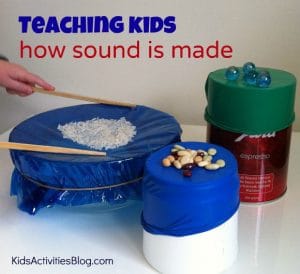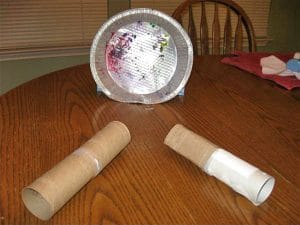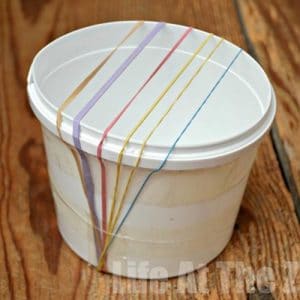Four Fun Sound Experiments for Kids Labor Day weekend is here, which means beach trips, barbecues, and back to school. Here are some fun sound experiments parents and teachers can use to get their youngster’s brains working hard again- and they’re also a lot of fun!
How it’s Made
A great activity for preschool-aged children, you can show little ones how sound is made by using a few household items:
- Containers of various sizes (empty tin cans and bowls work well)
- Chopsticks or wooden spoons to act as drumsticks
- Cellophane paper and extra large balloons for the drumskins
- Various materials to bounce on the drums (we used rice, flour, dried beans, and marbles)
- Rubber bands
- Pair of scissors
Learn more at KidsActivitiesBlog.com

Teaching Kids How Sound is Made
The Tonoscope
Tonoscopes are fun tools that allow you to see the beautiful patterns that sound waves make. Watch as these minds are blown by the geometric patterns created by their own voice.
Need more proof that this is super cool? Even the teachers are having fun! The tonoscope only needs a few easy-to-find materials to create.
Echolocation
Teach your kids the concept of echolocation. Many animals like dolphins and bats use this. The predictable behavior of sound waves allows these animals to use sound instead of sight to learn about the location of objects in their immediate environment! You can do a sound experiment using two paper towel tubes and a pie pan, or for a group of children, assign one the role of bat and the rest, insects. Blindfold the bat, then have him or her squeak. After every squeak, the insects shake a noisemaker. The bat will use the sound of the noisemakers, which symbolizes the echo of the squeak, to locate its prey, the insects! Read more here.

Types of Echolocation
Sound Absorption and Reflection
A concept that people in the architectural acoustics field are very familiar with is that when sound waves reach an object, one of two things can happen (or both, more commonly). The material the object is made up of either reflects the sound waves back away from the object or absorbs the sound waves, thus ending the audible noise. By using a container, rubber bands, and a hand towel, children can easily hear the difference between what happens when sounds are reflected or absorbed. Read more about Sound Absorption and Reflection
Resources:
For more classroom ideas and info on school acoustics, go to our Too Cool for School Pinterest Board or read through our case studies!
To learn more about how Acoustical Solutions can solve your noise control problems, use our contact form, call one of our Acoustical Sales Consultants at (800) 782-5742, or visit us on the web at acousticalsolutions.com.

